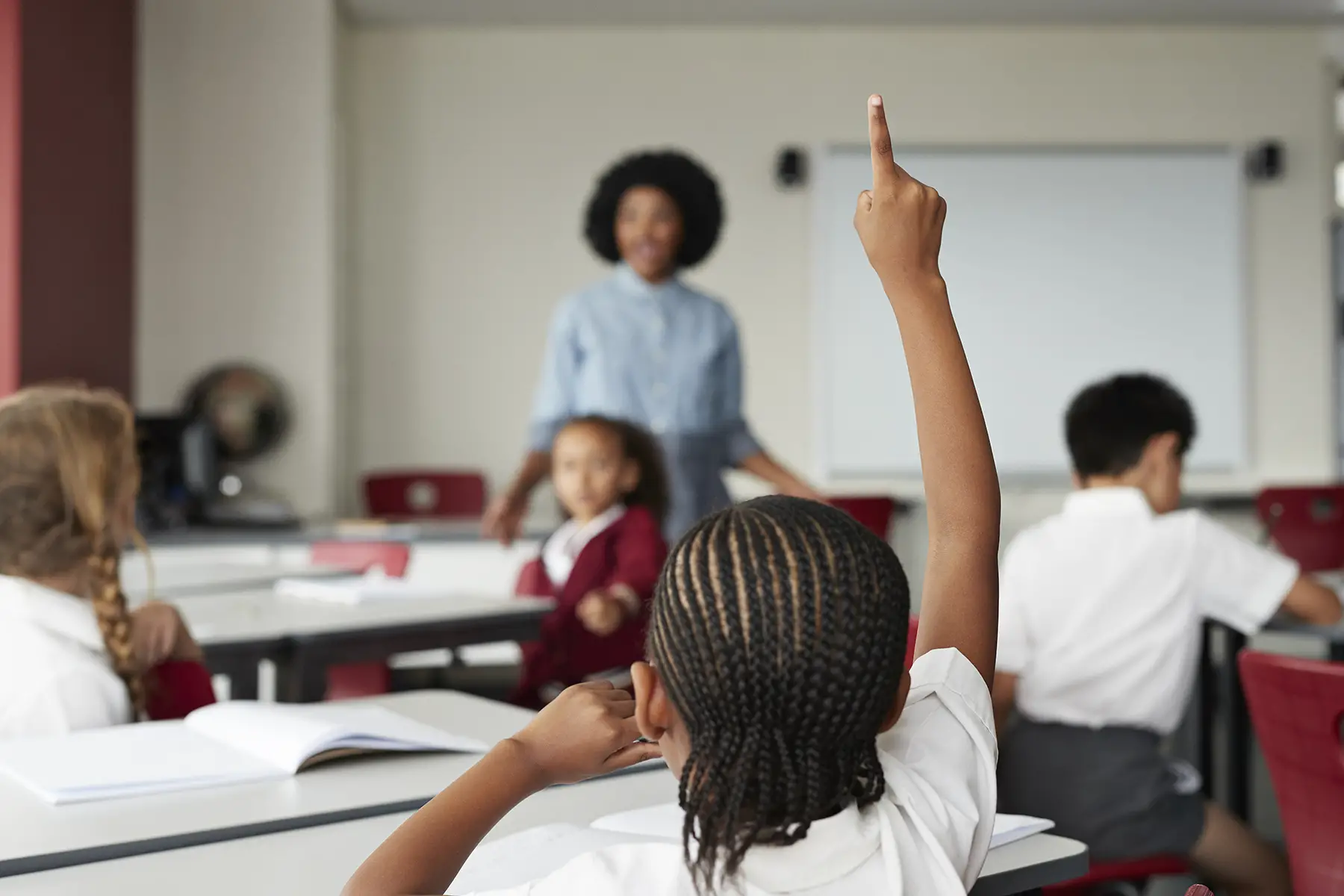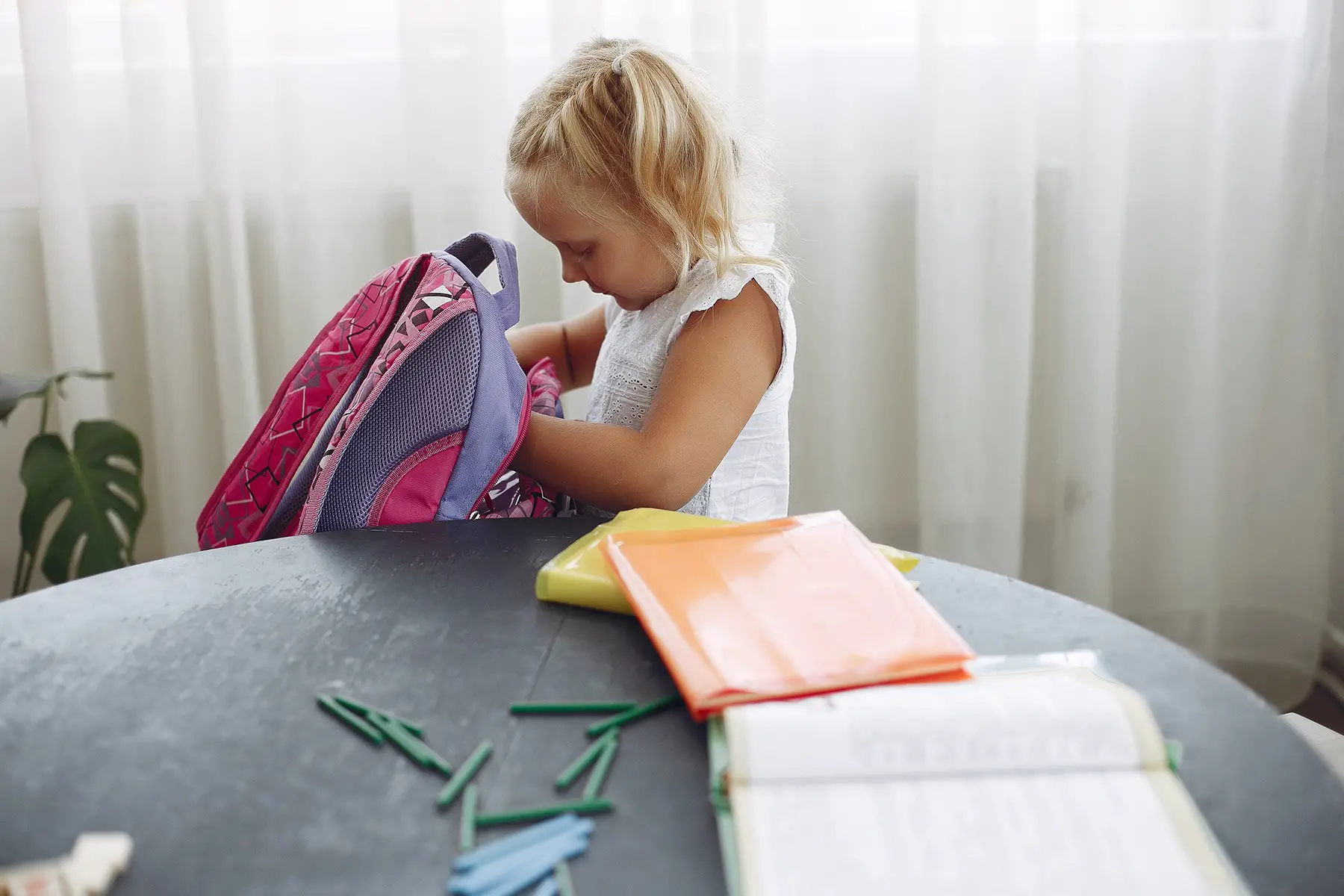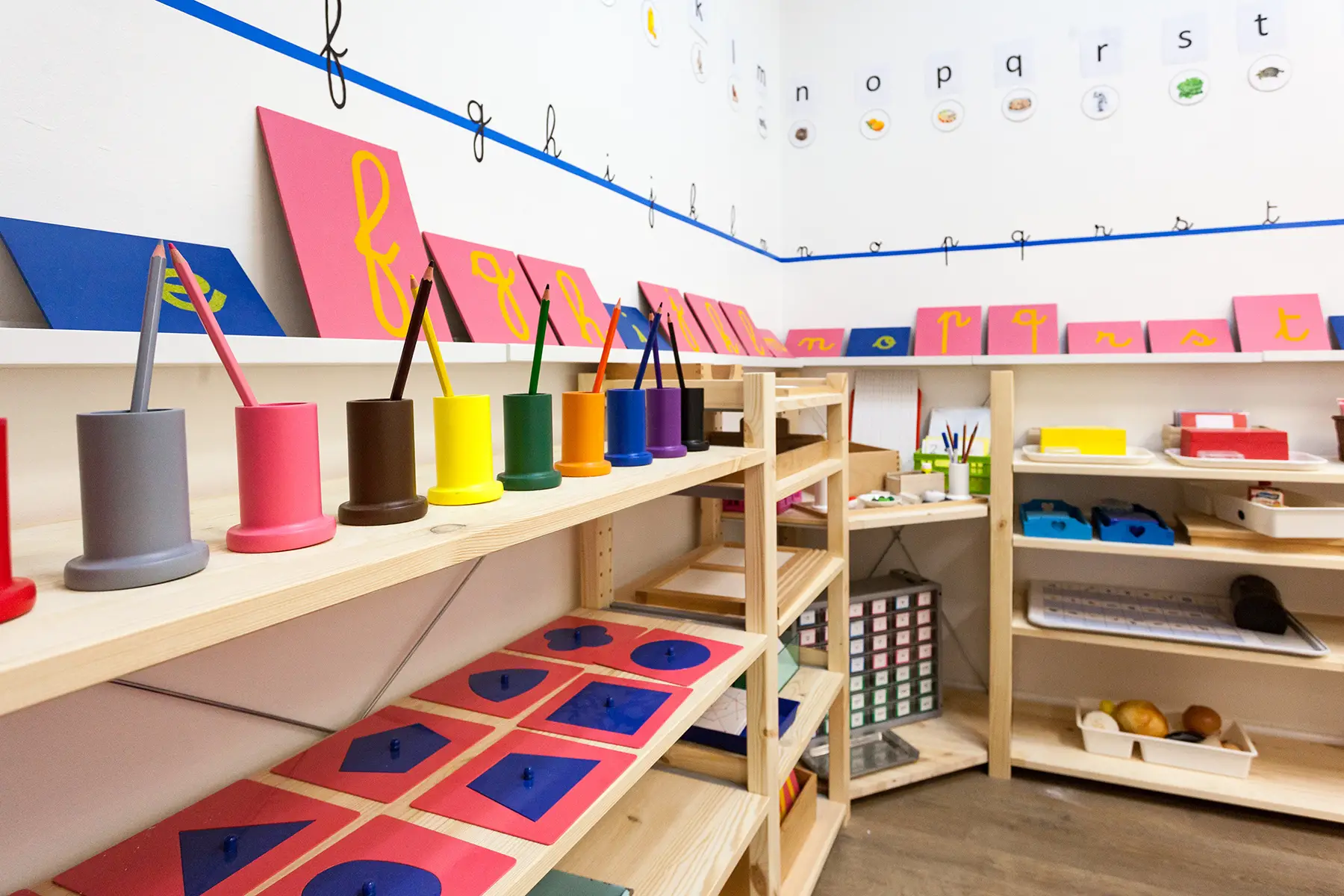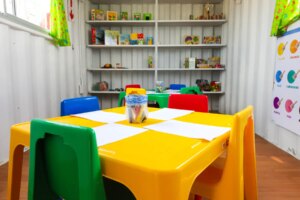Education is mandatory in South Africa. So, when you move there with your family in tow, you’ll want to find the best schools available.
To help you choose the right one for your child, we cover the following topics:
The primary education system in South Africa
The Department of Basic Education (DBE) oversees primary and secondary schools in South Africa. It stipulates the syllabus and assessments according to the National Curriculum Statement Grades R-12 (NCS).

It also categorizes education and training into three bands:
- General Education and Training (GET) – Primary and Secondary (Grade 0–9)
- Further Education and Training (FET) – Secondary (Grade 10–12)
- Higher Education and Training – Post-secondary (Universities and Vocational institutions)
Education is mandatory between the ages of 5–6 and 18. Children start primary education at 5 or 6 (Grade R) and complete 10 years (Grade 10–12). As a result, there is a high enrolment rate of 98.54% (2018) in primary schools in South Africa.
Primary schools are divided into three phases:
| Phase | Grades | Age |
| Foundation Phase | R/0–3 | 6–9 |
| Junior Primary/Intermediate Phase | 4–6 | 10–12 |
| Senior Phase (covers last year of primary school and first two years of secondary school) | 7-9 | 13–14 |
In addition, primary education covers seven learning areas:
- Language, literacy, and communication
- Mathematics, literacy, and sciences
- Human and social sciences
- Natural sciences
- Technology
- Arts and culture
- Economic and management sciences
- Life orientation
Students’ progress and achievements are assessed based on the principles and guidelines set out in the Curriculum Assessment Policy Statements (CAPS) for each phase.
Of course, South Africa’s primary education includes state and private schools.
State/public primary schools in South Africa
In 2018, an estimated 7.9 million students attended primary schools in South Africa.
State schools are not free, apart from a few no-fee schools in the country’s poorest areas. Instead, schools divide into five quintiles. Quintile 1 (Q1) schools receive the most state funding. They charge the lowest school fees as they are considered in the lowest-income communities. In contrast, Quintile 5 (Q5) schools receive the lowest government subsidies as most parents can generally afford higher school fees.
On average, tuition fees range from R3,500–8,000/month. However, parents who cannot pay these fees must apply to the school governing board for exemption.
The curriculum in state primary schools in South Africa
The primary curriculum divides into three phases: Foundation, Intermediate, and Senior. Notably, the Senior phase starts in Grade 7, the last year of primary school. However, it continues into secondary school up to Grade 9.
During the Foundation phase at primary schools in South Africa, students spend around 25 hours per week on literacy, numeracy, two languages, and life skills.
On average, students attend 27.5 hours of school each week during the Intermediate phase. They expand their learning to include history, geography, natural sciences, technology, social sciences, and life sciences. Furthermore, they must study an additional official national language.
Each grade also includes weekly physical education lessons. Most schools, depending on their resources, may also offer limited extracurricular activities and sports, such as rugby, cricket, football, tennis, swimming, netball, athletics, hockey, chess, music, and debate.

Since 2011, schools have assessed students’ educational progress using the Annual National Assessment (ANA) guidelines. The aim is to ensure children meet their learning goals and to identify areas where they need support. However, critics of the system argue that instead, it results in ranking schools based on performance and measuring teachers’ competency. There is also the risk of creating an environment of teaching for the test rather than nurturing lifelong learning.
Some schools have overcrowded classrooms, but on average, class sizes in primary schools in South Africa range from 32 to 38 pupils. The school year runs from January to December, with four holidays, the long summer break being in December and January.
The pros and cons of state schools in South Africa
One of the advantages of attending a public school is that your child will make local friends and integrate better into your community. They will also be exposed to and learn other South African languages.
Unfortunately, public primary schools are not free, albeit much more affordable than independent and international institutions. As a result, these schools often have fewer resources, facilites, and activities. Class sizes also tend to be larger than in private schools.
However, many public schools do offer high-quality education. Still, it depends on their funding, again highlighting the inequality in the state education system. Typically, schools in areas where parents can afford higher fees can offer more and perform better academically.
Applying to state primary schools in South Africa
Registering your child for a state primary school in South Africa is easy. But, you will need to prepare some documents in advance. Before starting the application process, be sure to have your child’s birth certificate and proof of up-to-date immunizations.

You can apply directly to the primary school of your choice. Generally, this is a local school close to home. To begin the process, you will file a formal application form, supply the above documents, and pay a registration fee. Some schools may also have interviews as part of their application process.
After the application has been accepted, you will need to apply for a study visa for your child. This will usually cover the entire period they expect to attend school. To complete the registration process, you and your child must present your passports and approved visas in person at school.
Private primary schools in South Africa
Although most South African students still attend state primary schools, there are also several private and international schools in the country. In 2018, only 6.6% of primary school students enrolled in independent schools. The biggest hurdle for most South Africans would be the costs of attending these schools, which are significantly more than state schools.
Private primary schools in South Africa usually offer better-quality education than state schools. In addition, they often have more facilities and smaller class sizes.
The exact fees differ based on the type of school and its location. For example:
- Constantia Kloof Montessori – R33,630/year for pre-school and R47,880/year for primary school
- Lycée Jules Verne – R82,122.50/year for pre-primary and R93,357/year for primary
Some schools offer discounts for siblings or if parents pay fees annually instead of monthly.
Religious schools
Although these are not as common in South Africa as in some other countries, there are several religious primary schools. These offer a faith-based education alongside traditional academics to foster the students’ spiritual growth. Some examples include the King David Schools (Jewish) and St Paulus School (Catholic).
Montessori schools
Montessori schools are popular around the world for primary education. The system encourages students to think and act creatively and independently, giving them the tools for success in further education and life.

Private Montessori primary schools across South Africa, include Alpha Montessori and Constantia Kloof Montessori. Remember to check whether your chosen school are accredited by the South African Montessori Association.
Waldorf schools
Like the Montessori system, the Waldorf approach focuses on creating well-rounded students with a life-long love of learning. Waldorf schools aim to help each child develop their natural, unique abilities with creative and expressive activities. Some private Waldorf primary schools in South Africa include Gaia Waldorf School, Roseway Waldorf School, and Stellenbosch Waldorf School. To ensure quality education, schools should be members of the South African Federation of Waldorf Schools.
International schools in South Africa
International schools in South Africa are popular among the immigrant population. These schools follow the curriculums of particular countries, such as the American, British, French, or German education systems.
The advantage of these schools is that students are already familiar with the syllabus and can learn in their first language. When moving back home or relocating again, they will experience minimum disruption to their education. They will also attain internationally recognized qualifications.
These schools usually include a continuous education from pre-primary to secondary school, with facilities housed on the same premises.
Some of the most popular international schools in the country include the Crawford International Schools, the American International School of Cape Town (AISCT), and the Lycée Jules Verne.
The pros and cons of international schools in South Africa
There are certain advantages to attending an international primary school in South Africa. For example, the education and facilities are better, with smaller class sizes and more after-school activities. In addition, these schools are usually multicultural, and students have the chance to learn several international languages.
Of course, there are some disadvantages too. Children have fewer opportunities to make local friends and integrate into South African culture. Usually, tuition fees are high, but some companies attract staff from abroad by offering to pay for their children’s schooling. Often, the admission criteria can also be competitive, resulting in long waiting lists.
What’s next for your child?
Secondary education – colloquially called high school – follows directly after graduating from primary school. It spans five years (Grades 8 to 12). Afrikaans language schools may call this hoërskool, while Zulu call it isikolo esiphakeme and Xhosa call it isikolo esiphakamileyo.
You can read more about this education phase in our article on secondary schools in South Africa.
Useful resources
- Education, South African Government – government site for education in South Africa
- Department of Basic Education (DBE) – the department responsible for primary schools
- Independent Schools Association of South Africa (ISASA) – organizational body for private schools
- South African Federation of Waldorf Schools – local organization for Waldorf schools
- South African Montessori Association – local organization for Montessori schools






